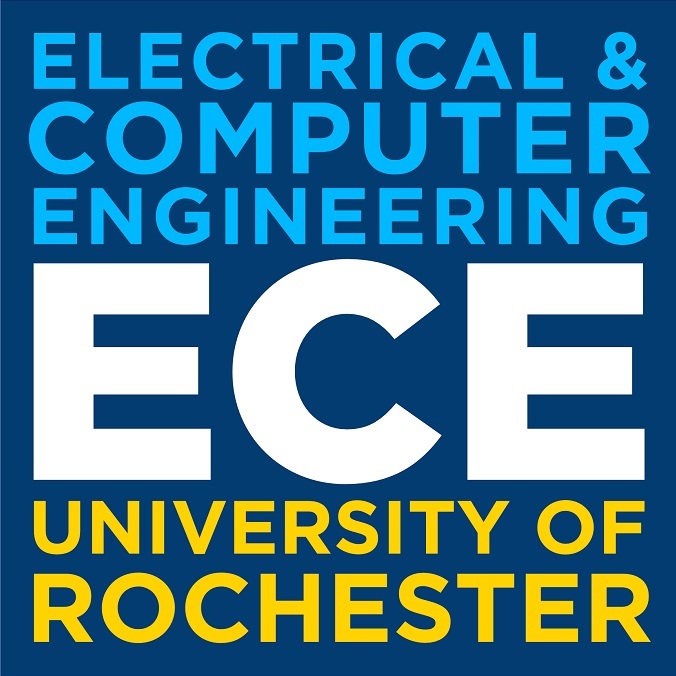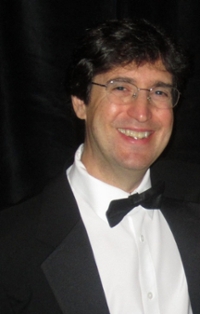ECE Seminar Lecture Series
New Approaches to Ultrasound: Enabling Diverse Capabilities in Medical Imaging
Robert Haupt, Senior Scientist in the Active Optical Systems group at MIT Lincoln Laboratory
Wednesday, October 4, 2023
Noon–1 p.m.
Wegmans Hall 1400

Lincoln Laboratory and the Center for Ultrasound Research and Translation (CURT) at MGH are collaboratively developing two portable/automated ultrasound systems intended for field-forward medical imaging and assessment: Noncontact Laser Ultrasound (NCLUS) and Microwave Ultrasound (RFUS).
NCLUS employs a pulsed laser that converts optical energy to ultrasound waves at the skin surface via thermoelastic mechanisms without patient contact. A laser Doppler vibrometer then measures the induced vibrations at the skin surface from ultrasonic echoes returning from the tissue interior. NCLUS has potential to advance medical ultrasound by overcoming limitations of a hand-operated contact probe. NCLUS is designed with the goal to address multiple applications: anatomical imaging, bone elastography, disease feature tracking, acquisition through burned or traumatized tissue, neck injuries, open surgical regions, and neonatal care.
RFUS uses pulsed microwave (RF) energy that transmits through bone and generates ultrasound waves via thermoelastic mechanisms in the underlying soft tissue. The RF emitter is a multi-element phased array placed on the skin surface that can steer and focus ultrasound in the brain or chest cavity. The RFUS system is being developed with the goal of producing a noninvasive system to detect and delineate the extent of internal bleeding, organ damage, and to image other injuries and disease states.
In this talk we will describe the Military Operational Medicine Research Program and Combat Casualty Care Program (Army) funded research and development of these systems and our plans to transition these as capabilities for field-forward clinical settings.
 Bio: Rob Haupt is a senior scientist in the Active Optical Systems group at MIT Lincoln Laboratory and joined the lab in 1996. His expertise is in coherent lidar, photoacoustics, seismology, acoustics, and nonlinear acoustics. He has created and lead novel systems development programs such as detecting landmines and IEDs, hidden damages in bridges, and trace level explosives, and to perform thermoelastic ultrasound for medical imaging. He has developed concepts for mapping underground facilities using seismic techniques, seismic cloaking, and recently, being part of a Lincoln team building an Acoustic Early Warning system to detect, track, and ID airborne threats attacking civilians.
Bio: Rob Haupt is a senior scientist in the Active Optical Systems group at MIT Lincoln Laboratory and joined the lab in 1996. His expertise is in coherent lidar, photoacoustics, seismology, acoustics, and nonlinear acoustics. He has created and lead novel systems development programs such as detecting landmines and IEDs, hidden damages in bridges, and trace level explosives, and to perform thermoelastic ultrasound for medical imaging. He has developed concepts for mapping underground facilities using seismic techniques, seismic cloaking, and recently, being part of a Lincoln team building an Acoustic Early Warning system to detect, track, and ID airborne threats attacking civilians.
Prior to coming to Lincoln, Rob was a geophysicist for the Atlantic Richfield Company (ARCO) in the oil & gas exploration group based in Denver, CO. He specialized in seismic techniques to image complex structural geology in the U.S. and Canadian Rocky Mountain regions. He also worked on Prudhoe Bay and the Chukchi Sea, Alaska seismic exploration programs. During his time at ARCO, he experienced being treed by bears and witnessed a helicopter crash from the passenger front seat in the Sawtooth mountains.
He received a BS degree in Physics and a BS degree in Meteorology from the State University College of NY at Oswego. Following, he received an MSc degree in Geophysics from Penn State University and later an MS EnvE – Hydrogeological Engineering from Dartmouth College in New Hampshire.
Rob has over 30 publications, including a Nature publication on the noncontact laser ultrasound (NCLUS) technology. He has 10 patents and several in progress, received two R&D 100 awards a) photoacoustic detection of explosives (PHASE), b) noncontact laser ultrasound (NCLUS) for medical imaging, a silver medal R&D100 award for NCLUS as the disruptor technology in 2023, was the recipient for the best invention award at Lincoln Laboratory for NCLUS, and was selected for one of the top 5 patents in the Boston area, 2019, by the Boston Patent Lawyers Association for Seismic Cloaking protection of critical infrastructure from earthquakes. He has strong collaborations with MIT and MGH and is a research associate in the Civil and Environmental Engineering Department at MIT. He also serves as a thesis advisor at MIT and Boston University, where all of his mentored students now work at Lincoln Lab.
